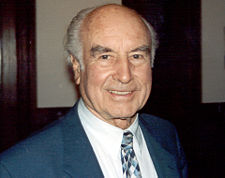 Albert Hofmann, the chemist who discovered LSD, died last week, but not before seeing his “problem child” return to it’s use as a medical treatment. Originally celebrated as a potential treatment for psychosis, mania and depression, the drug’s therapeutic uses were studied widely in the 40s and 50s. Then came the 1960s. Not long after the counterculture embraced LSD, toxic knockoffs hit the streets. LSD’s therapeutic benefits were lost in the chaos.
Albert Hofmann, the chemist who discovered LSD, died last week, but not before seeing his “problem child” return to it’s use as a medical treatment. Originally celebrated as a potential treatment for psychosis, mania and depression, the drug’s therapeutic uses were studied widely in the 40s and 50s. Then came the 1960s. Not long after the counterculture embraced LSD, toxic knockoffs hit the streets. LSD’s therapeutic benefits were lost in the chaos.
Having “spent the latter part of his life consulting with scientists around the world who wanted to bring his ‘problem child,’ as he called the drug, back into the lab to study as a therapeutic agent,” Hofmann was rewarded with news that Switzerland health officials approved the first medical trial of LSD in more than 35 years. The trial will test if the drug can ease end-of-life distress. Several more trials are in the works:
“I think people in this country, when they see a patient in pain, will not deny that person a medication just because the drug has abuse potential,” said Dr. John Halpern, a Harvard psychiatrist who is testing the effect of MDMA-assisted psychotherapy in late-stage cancer patients. “LSD is always going to be a touchy subject but I think it’s kind of fallen back to earth.”
LSD is a potential treatment for headache disorders, particularly cluster headaches. With a similar chemical structure to serotonin, LSD has possibilites for other headache types as well.
Photo by Philip H. Bailey

Me too. It sure sounds horrible to me!
Kerrie
Interesting I think I had heard mention of this somewhere else recently, hope it can help some ppl.